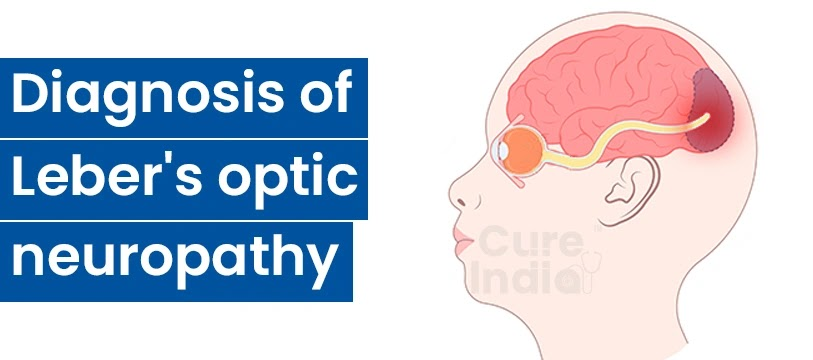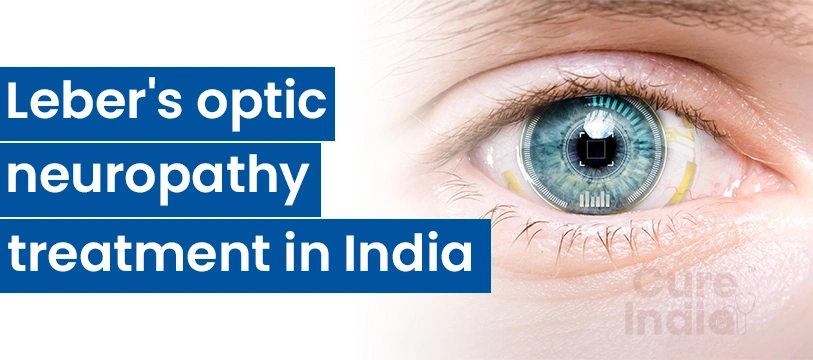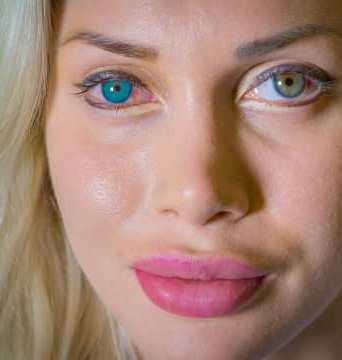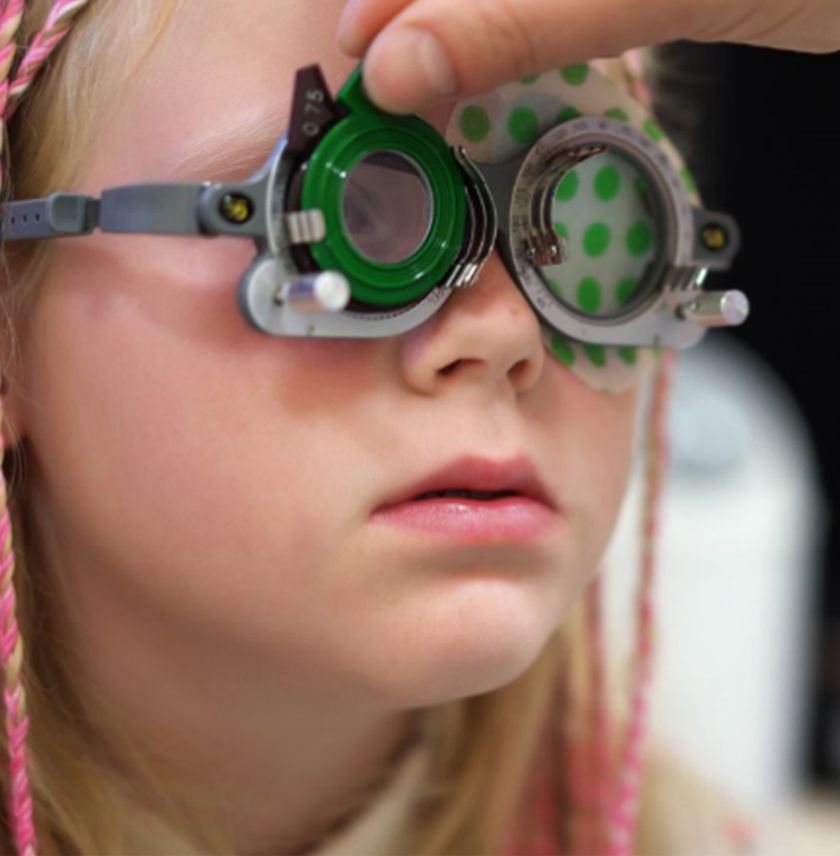Leber’s optic neuropathy is a rare genetic disorder that affects your eyes, leading to sudden vision loss. The disease is more common in young patients, generally between the ages of 15 to 25. Studies have shown that specific populations in Africa have a high prevalence of this condition.
Genetic mutation, smoking, and poor healthcare access can inflame Leber’s optic neuropathy in African communities. In addition to that, eye care is limited in many parts of Africa. The country also lacks advanced genetic testing facilities and expert opticians for quality treatment.
At the same time, India has emerged as a popular destination for Leber's optic neuropathy, India’s advanced medical facilities of top-notch treatment options for patients from across the globe, including Africans. From genetic testing to Idebeone therapy, you can get everything at a fraction of the cost than in the Western countries.
Moreover, hospitals in India are known for their highly trained oculist and neurosurgeons. They provide personalised care using state-of-the-art technology to give a seamless experience to patients. Additionally, India's healthcare system combined with affordable healthcare, provides an excellent option for Africans. Thus, people from African countries such as the Congo, Ghana, Kenya, and others travel to India seeking timely intervention.
Leber's hereditary optic neuropathy is a mitochondrial genetic disorder. It is typically passed down maternally through genetic mutation in the mitochondrial DNA rather than nuclear DNA. In people with Leber’s optic Neurotherapy, the mitochondrial DNA impairs the ability of energy production cells.
It primarily affects the optic nerve which is responsible for transmitting visual information from the eyes to your brain. As a result, this dysfunction leads to the degeneration of the optic nerve and leading to a substantial loss of central vision.
Leber's optic neuropathy is majorly caused by mutation in the mitochondrial DNA which is inherited maternally. The most common mutation is found in three genes, including ND1, ND6, and ND4. You inherit all of these genes from the mitochondrial chains of your mother. It mainly affects the Adenosine Triphosphate that provides energy to cells. As a result, the harmful reactive oxygen causes damage to the optic nerve.

While both males and females can inherit the genetic condition, almost 85% of those affected are men. Leber's optic neuropathy generally occurs in younger adults. Although people of every age can be affected by this, it primarily affects patients between the age of 15 and 25.
While genetic mutations are the root cause, some environmental factors also trigger LON. Smoking, in particular, increases oxidative stress, which damages the optic nerve. As a result, people with external causes can develop symptoms of Leber’s optic neuropathy.
Leber's optic neuropathy is generally painless and causes sudden vision loss in one or both eyes. That means you will notice changes in your central vision first, and then it will progress over several months. The severity and progression can vary upon people with Leber’s optic neurotherapy. Let’s know about the early symptoms of this condition:
Vision loss is the most common symptom of Leber's hereditary optic neuropathy. You will lose your sharp central vision, which can become severe enough to impair your daily activities. However, your peripheral vision will not still be restored. However, you may need help to do tasks that require detailed eyesight.
Many people with this condition notice color deficiency in vision. You may see a reduction in the ability to perceive bright colors, particularly red, orange, or green. This symptom would be subtle at first but lead to more progression over several months.
Blurring or clouding of central vision in one eye is one of the initial symptoms of this condition. Generally, it occurs in one eye at first, but the same symptom in the other eye comes within a short period.
In most cases, the vision loses progress rapidly over a short period of weeks to a few months. Your visual acuity drops to a level that is considered legally blind or worse. In some cases, people may get back some of their vision but this doesn't usually happen.
The diagnosis of leber's hereditary optic neuropathy is based on clinical symptoms, family history, and genetic testing. Ophthalmologists play a crucial role in determining the attribute changes in the optic nerve and vision loss patterns. Here are some diagnostic methods for this condition in the following:

This is one of the primary tests your ophthalmologist will conduct to assess the level of your vision loss. Visual acuity measures how clearly you can see. For instance, in this procedure, you have to stand at a specific distance from a chart.
This chart generally consists of numbers and letters of different sizes. Your oculist will ask you to read each line of letters and numbers until you can no longer read those correctly. Thus, regular visual acuity tests track the progression and determine which treatment is suitable for improving your vision.
This is another crucial diagnostic tool for assessing this condition. It helps to examine the extent of vision loss and identify any specific pattern or attribute. In this procedure, doctors use a device called perimeter to project small dots of light onto a screen.
Then, the optician will test whether you can see the dots or where your vision is impaired or lost. This test can determine how much of the field of vision is affected. Also, repeated vision field testing can monitor the progression of this condition and evaluate the success of treatments.
This is another crucial diagnostic tool for finding pale optic discs in LON affected people. In this procedure, a professional ophthalmologist uses a unique instrument with light to examine the back of your eyes for signs of damage.
In the early stages, there can be swelling and blood vessel abnormalities. As the disease progresses the outer layer of the optic disc may be thinner than usual. Thus, ophthalmoscopy is often performed to monitor the progression of optic nerve damage.
Genetic testing is conducted once the clinical symptoms and family history suspect Leber's optic neuropathy. In this test, ophthalmologists look for mutations in the mitochondrial DNA, particularly ND1, ND4, and ND6 genes. This testing not only confirms LON in people but also identifies family members who carry the same mutation.
Not all patients with Leber's optic neuropathy develop vision loss. Several factors contribute to the rapid progression of the disease in genetically susceptible people. Some risk factors can be:
Smoking is the primary risk factor for the rapid progress of this condition. Smoking generates harmful substances, which increases oxidative stress in your body. This oxidative stress can further damage the mitochondria and slow progress. Smoking can also lead to chronic inflammation, which can damage the optic nerve and accelerate LON.
Excessive alcohol consumption also increases the risk of vision loss in people with Leber’s optic neuropathy mutation. Similar to smoking, alcohol metabolism also produces harmful oxidative stress.
Heavy alcohol consumption can lead to nutrient deficiency which is essential for your eye health. Therefore, deficiency can weaken your optic nerve and make it more susceptible to vision loss.
Other than the above factors, environmental stressors such as exposure to toxins and certain medications can contribute to the progress of LON. These factors can increase oxidative stress and cellular damage in people who already have mitochondrial damage.
Unfortunately, there is no permanent cure for Leber’s optic neuropathy. However, several treatments are available to manage the condition and improve the quality of life.

Certain medications such as synthetic antioxidants have proven some promising results in leber hereditary optic neuropathy treatment. It protects the optic nerve cells from oxidative damage. As a result, it can improve visual outcomes for patients who are in the early stages of these conditions.
Other medical leber hereditary optic neuropathy treatment, like gene therapy, are currently under trial. However, scientists have explored the possibility of recovery from LON. Gene therapy can deliver healthy copies of mitochondrial genes to the optic nerve and restore their function from further degeneration.
This treatment is also under research. Scientists are initiating the development of antioxidants that specifically target mitochondria and reduce oxidative stress in people with this condition, however, this treatment aims to protect the optic nerve from further damage and preserve vision.
Some general supportive care includes:
This supportive care can help people adjust their vision loss and develop new skills for navigating daily life. With these programs you will get used to assistive devices and techniques for maximizing your remaining vision.
If you have partially lost vision, then you can benefit from the use of low-vision aids. These aids include magnifiers and screen readers, which are specially designed for people with visual dysfunction. This can help improve the ability to perform your daily activities more comfortably.
Selecting the right specialists for Leber Optic Neuropathy treatment helps with timely diagnosis and effective management. LHON is a rare mitochondrial condition that causes sudden central vision loss, making expert guidance important. In India, a number of leading neuro-ophthalmologists and mitochondrial disorder specialists offer comprehensive care that includes advanced diagnostic testing, genetic counselling, and treatment options such as antioxidant therapy. Here are some of our top doctors for LHON treatment in India:
Dr. J.S. Titiyal is a top-rated ophthalmologist and retina specialist in India with over 46 years of clinical expertise in treating Leber Optic Neuropathy. His advanced knowledge in genetic retinal diseases, diagnostic techniques, and medical management ensures that patients receive the best possible care.

Dr. Digvijay Singh is a leading neuro ophthalmologist in India with over 12 years of experience specialising in Leber Optic Neuropathy and other inherited optic nerve disorders. He is known for providing comprehensive treatments that include genetic testing, early intervention, and visual rehabilitation, ensuring patients receive optimal care for the best results.

Dr. Anita Sethi is a top ophthalmologist in India with over 35 years of experience in diagnosing and treating leber optic neuropathy. She is known for her expertise in genetic testing, visual rehabilitation, and advanced therapeutic interventions for LHON patients.

Dr. Richa Sharma is a leading retina and optic nerve specialist with over 17 years of experience in the management and treatment of Leber Optic Neuropathy (LHON). Her expertise includes genetic counselling, diagnostic imaging, and advanced treatments tailored to the needs of LHON patients.

The cost of treating Leber's optic neuropathy can vary across different countries. Especially in regions with limited healthcare frameworks like Africa, the treatment is inaccessible for patients. On the other hand, developed countries like the USA and Europe provide this treatment at an expensive range. Moreover, access to specialis medical care and genetic testing can exceed $15,000 to $30,000 or even more.
| Treatment Name | Cost in India | Stay in India |
|---|---|---|
| Leber’s Optic Neuropathy Treatment in India | $3,000 | 7 - 10 Days |
In contrast, India offers high-quality Leber's hereditary optic neuropathy treatment at a much more affordable cost. The cost comes with advanced framework and expert oculists. Indian hospitals are equipped with the latest technology and highly trained specialists who offer world-class care without breaking the bank. For instance, the cost of Leber's optic neuropathy treatment in India ranges between $3,000 to $7,000.
Thus, many Africans often come to India due to its cheap and noteworthy healthcare. At the same time, many African countries lack specialized diagnostic and eye care facilities. India's patient-centric care and reputation in affordable treatment. These lucrative appeals make it a popular choice for African patients seeking expert treatment for Leber's optic neuropathy.


Get the Eye color you've always dreamed of
Connect Today
Opt for successful eye color change surgery
Plan Surgery
Remove glasses with SMILE LASIK
Get Cost